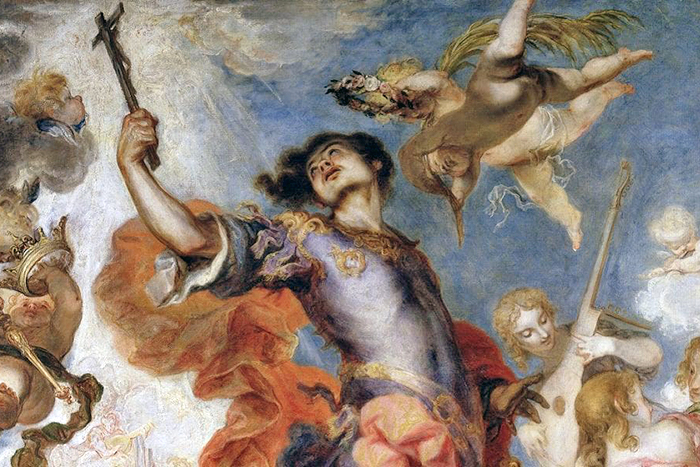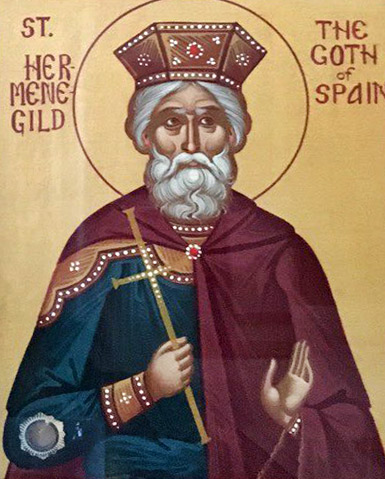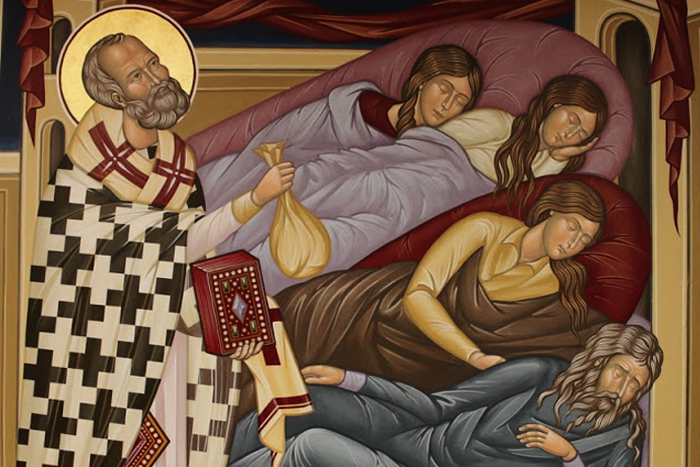
The Synod of the Russian Orthodox Church established the Feast of the Synaxis of Spanish and Portuguese Saints on December 28, 2018. The memory of the martyr Hermenegild was included in this celebration. Who was this saint and what did he glorify God with?
Marriage. The future saint was the son of Liuvigild, the Arian king of Visigoths (568-586). The territory of the Visigoths spanned across most of Spain and half of Gaul. Wishing to secure his state from the east, Liuvigild married his son Hermenegild to Ingund, the daughter of the Frankish king Sigebert I, who professed the Nicene faith. Their wedding took place in 579. Liuvigild’s wife, Goiswintha, who hated the Franks, began scheming around Ingund, trying to convert her into Arianism. Although Ingund was barely twelve years old, she bravely defended Orthodoxy and even tried to convert her husband, Hermenegild, into the faith of the Nicene Council. According to St. Gregory of Tours (†594), the famous historian, Goiswintha “grabbed the girl by her hair, threw her on the ground and beat her with her shoes until she bled and then ordered her clothes to be taken off and dipped her in a pond” (Gregory of Tours. History of the Franks, Book V, 38), thus performing the Arian baptism, which was later ruled null and void because it was forced.
Arian Council. To calm down the tide of hatred, the king sends the young couple away from the royal court to Seville, where Hermenegild became a royal representative. Seville was the capital of the lands bordering on territories conquered by the Byzantines, who under Emperor Justinian tried to rebuild the Roman Empire. The inhabitants of Seville and the local nobility were Orthodox, so even the Visigoths gradually accepted Orthodoxy, which was particularly facilitated by mixed marriages. Problems arose when Liuvigild, in pursuit of state unification, decided to make the Arian faith the only one for all people. For this purpose, he held an Arian Council in 580, which adopted decisions to facilitate the conversion of Orthodox Christians to Arianism (John of Biclaro, Chronicle, 580, Chapter 2). Re-Baptism was abolished, clerics were accepted in their capacity, and for the transition one only had to take communion out of the hands of an Arian bishop and publicly pronounce the formula “Glory to the Father through the Son in the Holy Spirit”. In general, Liuvigild’s plan failed and there were fewer conversions to Arianism than expected. So the king decided to convert his subjects to Arianism by force.

The Adoption of Orthodoxy and the Uprising. During the same years, Hermenegild became close to St. Leander of Seville (†600), who was the Orthodox bishop and brother of two holy bishops, one of whom was the famous St. Isidore of Seville (†636), as well as St. Florentine (†612), the founder of the Spanish female monasticism. The virtues of Ingund and conversations with the enlightened St. Leander led Hermenegild to the conversion into Orthodox faith with the name of John. The dissatisfaction of the aristocracy with Liuvigild, the unwillingness of the Orthodox to convert to heresy, the persecution of Christians – all this brought the opponents of the king to Hermenegild. The king, having learned of his son’s conversion, ordered him to return to Toledo and renounce the Nicene doctrine, but the prince started a rebellion. The prince was initially supported by some cities, a tribe of Suebi, who occupied northwestern Spain, as well as the Byzantines, whose support was secured by St. Leander, who went to Constantinople for help. However, the king’s power was very strong and gradually his army crushed the rebels, captured the rebellious cities, and the Byzantine governor who had promised to help Hermenegild was bribed with thirty thousand gold coins. Deprived of allies and surrounded by enemy troops, Hermenegild surrenders to his father. Ingund and her son managed to escape, but were captured on the border by the Byzantines and sent to Constantinople. She died on the road from the first plague pandemic in the year of her husband’s martyrdom. Her son survived and was brought up at the court of the pious Byzantine emperor Mauritius.
Martyrdom. Since the son and father did not harbor evil towards each other, the father soon forgave his son and even returned all his titles. However, Goiswintha stirred suspicion in the king’s soul, especially after the army of Ingund’s uncle invaded Gaul. The prince was put back in prison and this time the king offers to free him only if he renounces the ‘Roman faith’. When an Arian bishop comes to Hermenegild to give him communion on Easter of 586, he flatly refuses, after which his father orders that his head be cut off.
The blood of the martyrs is the seed of the Church and the affirmation of the Truth. Shortly before his death, Liuvigild repents of the murder of his son, returns St. Leander from exile and makes him the mentor of his second son Reccared, whom he asks to accept Orthodoxy. Within four years, the brother of St. Hermenegild becomes Orthodox. The entire Visigothic nation officially renounced Arianism and accepted Orthodoxy on May 8, 589 at the Third Toledo Council. Thus, the death of one man for Christ changed the fate of the whole country: The people which sat in darkness saw great light; and to them which sat in the region and shadow of death light is sprung up (Matthew 4:16).



